On August 20, 2020, a 13-minute preview trailer for Black Myth: Wukong was released. Based on a pre-alpha build of the game done on Unreal Engine 4, the trailer stunned viewers when it was revealed that the technically impressive showcase came from a very small and relatively unknown team in China. After the trailer racked up tons of views, the team went silent, periodically popping up now and then with new trailers to highlight things like a move to Unreal Engine 5 or showing off progress without revealing too much. Finally, almost four years to the day of that initial trailer's release, Black Myth has finally arrived, and it will not disappoint hopefuls who made it one of the most wishlisted titles on Steam.
You play the role of the Destined One, someone who may or may not be the reincarnation of or a descendant of the legendary Son Wukong. You possess the legendary staff of the legendary deity, and you're tasked with roaming Ancient China to find the six legendary relics to open the large stone atop the mountain. The description of the story is kept intentionally vague at the publisher's request, but if you're familiar with the first part of Journey to the West, you'll have a good idea of what events and characters to expect. The game provides lots of background on each character you encounter so you won't be completely lost.
Describing the gameplay isn't so straightforward, as it spans several different genres and subgenres at once. The developers describe Black Myth as an action-RPG and, for the most part, it fits that designation with some of the typical mechanics. There's an XP system along with a level progression system, which ties into a skill tree that unlocks buffs and some new abilities. There's a crafting system to brew potions as well as new armor and weapon pieces, and there's a shop to buy potions and materials. You'll also meet several allies who'll help upgrade specific items that you can't do in the prayer shrines alone.
Beyond that, some of the preview coverage has called Black Myth a boss rush title, and that's partially true. The number of total bosses is quite numerous and almost equals the count of the regular foes you encounter. You are frequently pitted against a fully named enemy, and secret passageways can lead to secret boss fights. However, large chunks of the game are still devoted to simple exploration and enough encounters with regular enemies that the boss rush designation doesn't completely fit the title, either.
Similarly, other previews have called the game a Souls-like title, and that designation is also pretty true when you look at a good chunk of the game's mechanics. You have a stamina meter that depletes when you make any move that isn't just basic walking and jumping. Going to a shrine enables you to rest and refill all of your meters, but it also resurrects everyone in the world except for bosses and other major enemies. Your only means of healing comes from a gourd that can only be used a finite number of times per rest period. Even then, healing or taking care of ailments isn't automatic. You still need to allow for the action of drinking liquids to occur. Dodging is also something you need to learn quickly because even basic enemies can hit with considerable strength.
Then again, there are other gameplay elements where Black Myth moves away from being a Souls-like and more into being a Souls-lite. Depleting your stamina doesn't leave you completely vulnerable, as you can still unleash light attacks and combos even if you can't dodge for a short while. Activating or accessing a shrine doesn't automatically rest your character and resurrect everyone, but you'll want to rest often since it means you can farm XP to build yourself up if a boss fight is too difficult. Death also isn't so punishing since you lose nothing when you're defeated, so you don't have to worry about trying to re-gather anything you lost.
One of the more interesting aspects of the game is that you only have one weapon in your arsenal — a holy staff — but there are some good alternatives. You can modify the staff to take on different abilities and buff your stats. You can also unlock different attack stances and switch between them with a simple button press to get completely different attacks. For example, you can go with one stance to sit atop your pole and wait to inflict a brutal overhead smash, while another stance lets you furiously twirl your staff to deflect a barrage of incoming flaming arrows. One of the cooler abilities is transforming into some of the bosses that you've beaten. Some of the transformations are short in length and equate to a special attack with decent prep time before execution. Other transformations are more complete, as they give you a different attack set to work with and act as a temporary second life since you'll transform back to your old self if either your health gets depleted or your transformation timer expires.
Make no mistake, the game is still brutally hard. Even the lowliest of bosses can wipe you out quickly if you are careless, and the timing to execute a flawless dodge needs precision, especially since you have no parry or block abilities. You will die, and you will die very often.
At the same time, all of the other game mechanics mean Black Myth is slightly more forgiving for those who aren't as adept at their Souls-like skills. The game's tendency to favor flashy action over more precise hits means that a little button-mashing won't hurt . Stamina management yields a cleaner fight, but it isn't paramount when it comes to winning some battles. The constant XP opportunities mean that running away from battles is detrimental to your overall progress. Fighting smart is still key to coming away relatively unscathed, but going berserk is a perfectly viable tactic. The game is a good blend of fast action and good defense that doesn't alienate either newbies or veterans.
There are a few issues we ran into during our review period, and while the developers have promised to have them fixed by launch, they are still worth noting. Some areas of the game still have Chinese text in place of English, but none of the areas are important to gameplay. We also experienced a few crashes that happened at random instances, and while the save system is robust enough that no progress was lost, we did have one crash occur during the middle of a boss fight. Again, the bugs could be fixed by the time the game officially releases, but they're something to watch out for.
For a story so epic in scope, the audio can initially feel subdued. Most of your journey has ambient sound, but when the music does kick in, it does so with the expected kinds of tones for each situation. Meditating provides calm tracks that provide a perfect accompaniment to the grand mountain scenery or ornate temple architecture. Big boss fights pump out tracks that exemplify the importance of each skirmish. The sound effects are rich, with certain ones pumping out the right amount of booming bass. The voice work is good but also interesting. Those who'd go for authenticity would opt for a Chinese vocal track, but considering how most people in the West are more accustomed to hearing Japanese or Korean, this might catch players off-guard. Going for English provides the benefit of understanding incidental dialogue when passing by normal enemies, but it's a very UK-centric cast.
Graphically, Black Myth looks amazing. The characters all animate well, but their designs will impress the most. From the intricate armor to decorations on the weapons to the fur shading on regular foes and bosses, there are plenty of things to show off what UE5 can do. The backgrounds are no slouch, either, as each environment sports a ton of impressive features, from billowing clouds to constantly falling leaves in the forest. All of this is accomplished without an on-screen object limit, but there are some long load times when traveling from one big area to another via the prayer shrines.
There is one flaw to the graphics: the presence of pausing. Entering a brand-new area after a long time causes the game to pause for a few seconds before gameplay resumes, but that seems to be the trade-off for not having the extreme texture pop-up that plagues most Unreal Engine games. Get into a big cut scene, and the pause is long enough to cause the cut scene to lose sync with the audio — and it can only be fixed by reloading the scene. Interestingly, this only seems to occur if you have everything maxed out. Just turn off ray tracing, and those stops seem to disappear, but you will notice more texture pop-in.
The gorgeous visuals come at a cost, though. When going through the options, there is no option to turn off upscaling. There's Temporal Super Resolution, XeSS, FSR, and DLSS, but there's no way to have the feature completely off. You can get around this by pushing the resolution scale all the way to 100%, but the big red warning that appears when you do so signals why the feature may be missing in the first place.
For reference, we're using a Ryzen 7 7700X for the CPU with 32GB of DDR5 RAM. The game is running on a standard SATA SSD, and the GPU is the Nvidia GeForce RTX 4090 using driver version 460.81. This is running on Windows 11 version 23H2. We're running the game at 4K with no frame rate limit. Unless stated, we're using the highest preset for the graphics, labeled Cinematic, and ray tracing is on and set to Very High. We're also using the game's built-in benchmark for these tests.
We'll start with TSR with the scaling set to 100%; the game drops to an average of 19fps. Dropping the scaling back down to the default of 50% lets the game hit an average of 52fps instead. What's interesting is that all of the other upscaling technologies only fare a little better to the point where it can be read as margin of error. They also produce the same results, so none of the proprietary upscaling methods are better than another for performance. DLSS at 100% scaling produces 20fps, DLSS at 75% for a Quality equivalent produces 37fps, and DLSS at 50% for a Performance equivalent gets to 54fps.
That's all with frame generation off, and unless you're using XeSS, turning on that option significantly improves the benchmark readout. At 100% with DLSS and frame generation, you'll get 37fps but the micro stutters and shimmering don't make this a pleasant way to play. Go to 75% scaling, and the frame rate hits 62fps on average, while 50% scaling gets you to 88fps on average.
With the RTX 4090 needing all of those things to get to a playable frame rate, Black Myth is a good candidate for stressing out future video cards with ray tracing on at its highest level. Much like Cyberpunk 2077, turning off ray tracing while leaving everything else alone changes that narrative greatly. Going back to TSR, 100% scaling gets you 40fps while 50% scaling gets you to 73fps. DLSS at 100% scaling gets you slightly better performance at 44fps compared to TSR, while 75% scaling gets you to 65fps and 50% scaling gets you at a more comfortable 79fps. Turn on frame generation, and scaling doesn't matter so much in a quest to get playable frame rates. Meanwhile, 100% scaling gets you to 74fps, 75% scaling hits 98fps, and 50% scaling achieves 117fps. The only noticeable drawback to the removal of ray tracing is with the game's finer shadows, which tend to lightly flicker. The hit to the visuals is well worth it if you have lower-spec hardware and value performance above all else.
For Steam Deck users, Black Myth works on the device, but there are shortcomings that come with it. The game goes for the system's default 1280x800 resolution, but the settings go for the "Low" default. The resolution scaling goes for 90%, but it also has both FSR and frame generation active. The end result is performance that hits an average of 40fps when running the game's built-in benchmark, but that can also drop significantly in some of the game's busier battles. Dropping the resolution to 50% makes the game hit an average of 57fps, so the slowdown isn't too bad during those same busy fights. You can squeeze almost two hours out of a full charge on a Steam Deck LCD version, and that's quite impressive. The lower frame rate means that some of the boss fights are going to be more difficult to conquer, but it's still cool to see the game running on a portable machine, considering the results of the desktop benchmarks on more powerful hardware.
After all those years of waiting, Black Myth: Wukong is a very good adventure game. Using a setting that rarely gets seen in the Western world makes the game intriguing, and that's strengthened when you discover all of the character background stories. The combat is just as varied as the environments you traverse, and while the game isn't as masochistic as other modern action games, it is difficult enough that a little patience and planning will still take you a long way in skirmishes. The presentation is amazing, but it stresses out even the best hardware at the moment. To optimize the gorgeous graphics in Black Myth, players need beefy hardware that can take advantage of various upscaling technologies. It is a worthy pick-up for patient adventure fans, and the title will keep players busy for quite some time.
Score: 8.5/10
More articles about Black Myth: WuKong


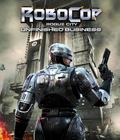
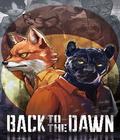


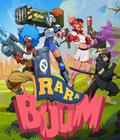

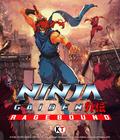
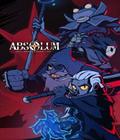

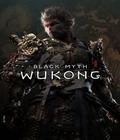 Black Myth: Wukong is an action role playing game based around the well-known Monkey King mythology and the 16th Century Journey To The West novel.
Black Myth: Wukong is an action role playing game based around the well-known Monkey King mythology and the 16th Century Journey To The West novel.













































